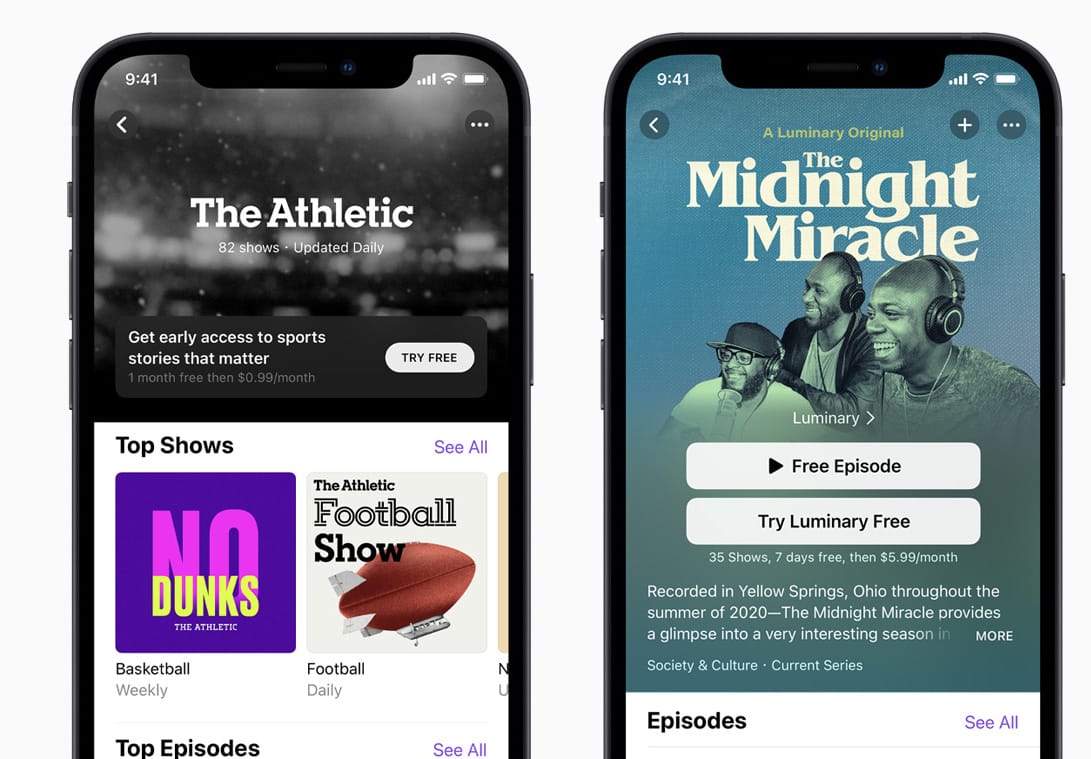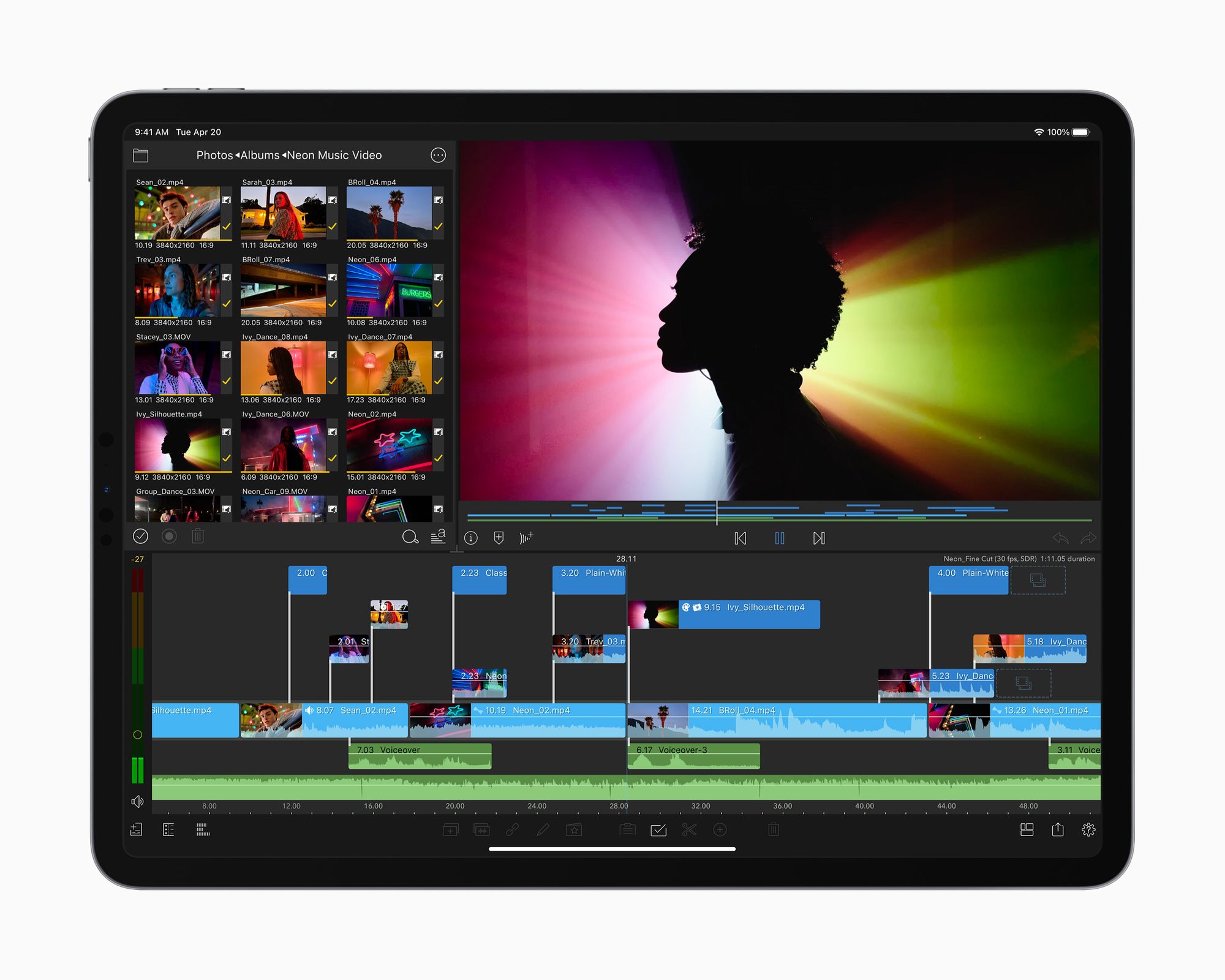Apple launches paid podcasts — and a mobile journalism powerhouse
Apple announced a bunch of new stuff last night, but two are of particular significance for journalism. Let's take a look.

Paid Podcasts arrive in Apple's Podcasts app
Apple has been a huge proponent of podcasts for 15 years, without ever really getting deeply involved in shifting the model of what is a long-established open standard. That changes now. There's a new version of the Podcasts app that supports paid podcasts.
Apple:
Starting today, creators in more than 170 countries and regions can offer premium subscriptions on Apple Podcasts, which will be accessible to listeners next month. Creators set the pricing for each subscription, which are billed monthly by default, and define the benefits, such as ad-free listening, early or exclusive access to new series, or access to additional or archival content. Creators can also offer annual billing and provide free trials and sample episodes.
On one level, yay for new ways of earning revenue. But let's be a little bit cautious about this. There's a real trade off here.
The benefits:
- Reduced friction — listeners can join your membership scheme with a couple of clicks. No more directing them to your website and signing them up there.
- Simplicity — you don't need to “roll your own” membership offering. No more processing payments, and building custom RSS feeds.
The drawbacks:
- Apple only! You'll need a different solution for your Android listeners.
- No use if a huge chunk of your listeners use Spotify or other podcast apps.
- Apple takes 30% in the first year, and 15% thereafter.
There's a good breakdown of the technical details — and some hints of where Apple might see this going in the near future — over at Podnews.
I've been a proponent of the paid podcasts idea for some years now. It will be interesting to see if this accelerates the process.

The new M1 iPad Pro is a MoJo powerhouse

The new iPad Pro is an incredible device for multimedia creators. It's now using the M1 chip — the exact same chip in the MacBook Pro I'm typing this post on right now, and which is one of the most powerful Macs ever produced. This handles several streams of 4k video with ease. And now, that's all in a tablet form factor.
Apple are applying some cool machine learning stuff to their camera on the iPad, making it both a recording and editing powerhouse. Much like the new iMac, this seems like the first evidence of Apple learning from the pandemic age, and building machines ready for great video conferencing use. Centre Stage, which uses a new wide angle front-facing camera and intelligently pans and zooms to keep focus on people, will be useful for video conferencing, training and, yes, filming.
Oh, and the big two mobile journalism apps — LumaFusion for editing and FilmicPro for recording — both got screen time in the keynote, as did members of their team. LumaFusion has a big update coming later in the year, which takes advantage of features in the new iPad.
This device should challenge the assumption that you do quick editing on your phone, and switch to a Mac or PC for “real editing”. For journalists in the field, particularly, this might be the critical device you need.
And, hey, Apple actually mentioned mobile journalism in the keynote. Validation.
Mixed blessings
I'm very much in two minds about the new Podcasts offering. New monetisation options are always good, but part of me worries about the erosion of the open standard that underlies podcasting. I'd have been more worried five years ago, when Apple had much more of a stranglehold on podcasts. But with Spotify now as big a player — and possibly bigger by some measures — there's less scope for a single company to undo the open nature of podcasting.
This change is going to incremental, and a nice revenue boost for some creators, but not transformative.
The new iPad Pros, on the other hand, are a spectacular new tool in the multimedia journalists' toolbox.
I'm looking forward to getting my hands on one.
Twitter is down-ranking your links
I suspect most of us had observed this already, but it's nice to see it conformed:
One of the largest effects we observed is that Twitter’s curation algorithm greatly reduced exposure to external links. On average, 51% of tweets in chronological timelines contained an external link, compared to just 18% in the algorithmic timelines

Quote of the Day
My newsletter is taking a break while it gears up for a reboot soon. I feel a bit lost though - I see something interesting and instinctively think 'I'll write about that in the newsletter tomorrow' and then remember I can't.
— Martin SFP Bryant (@MartinSFP) April 20, 2021
The best newsletters are habits on both ends: for the reader AND the creator.






